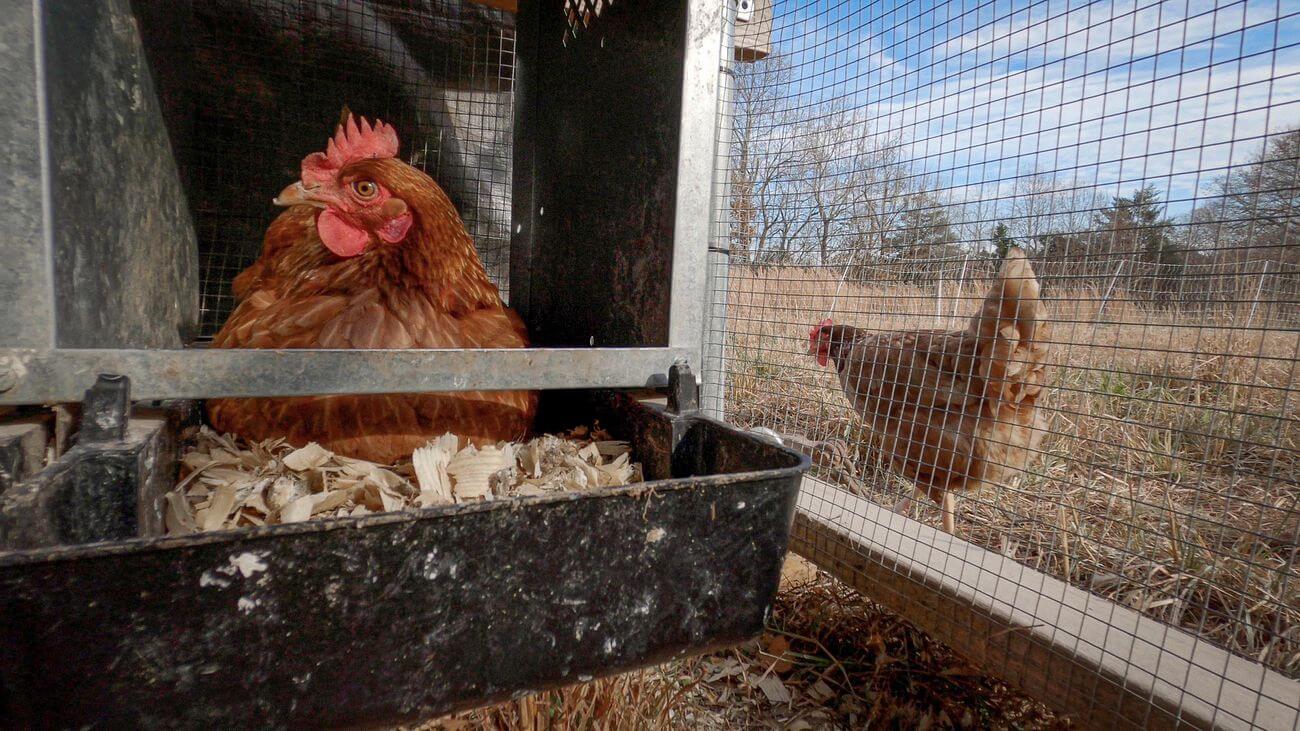Poultry biosecurity is essentially the backbone of poultry farming. Without it, your flocks will be exposed to a huge health and safety risk, and will likely have a high mortality.
A number of factors will determine poultry biosecurity in your farm. For instance, these include access, flock safety, lighting, climate regulation, disease control and coop hygiene. These are briefly discussed below.
Coop factors that promote poultry biosecurity
Housing system and hygiene
If you use deep litter as a way of providing bathing and bedding material, then litter handling will not be an issue. However, you need to do so once you have removed a flock and need to prep the coop for habitation by a new flock.
Moreover, if you use caged and other poultry housing systems, you will want to consider the means by which you will clean the coop of excess litter.

In regards, to coop hygiene build your coops as per poultry housing construction codes and requirements in your region. Additionally, take note to ensure proper drainage systems are in operation to ensure the coop stays dry and no runoff water seeps in from the ground.
Controlled access
Access to a coop refers to the movement of people and materials in and out of a chicken coop. For instance, access includes the means by which feed and water is delivered to birds. Feed and water delivery can be automated or manual. If manual, then you have to consider spacing required to access feeders and waterers.

Additionally, if egg collection is manual, you have to consider how the location of nesting boxes, and how egg collection is done.
Furthermore, if human access to a coop is frequent, and multiple people have access, you should consider the placement of a shoe disinfectant by the entrance. A shoe disinfectant bath is necessary to prevent the introduction of disease from the outside.
Controlled access also applies to the use of personal protective equipment (PPE). Every human entry to a coop is an opportunity of introduction of disease from the outside, and the extraction of the same from a coop.
Importantly, if you have multiple coops in your farm, you want to be careful not to become the disease carrying agent from one coop to the other. Therefore, proper use of PPEs is a must to ensuring the poultry biosecurity in your farm.
Safety
Safety means that flocks are well protected from would be predators.
For instance, safety requires that a coop’s floor and lower walling are predator proof. Some predators are known to dig below the walling and gain access to their prey if a coop is not built to withstand to standards.
Furthermore safety also means having active and passive measures to prevent and protect flocks from parasites. Since poultry parasites are grouped in to two, you will have to apply measures targeted at both. Examples of poultry parasites:
- Internal parasites
- Worms
- Protozoa
- Cryptosporidiosis
- External parasites
- Mites
- Fleas
- Lice
- Ticks
- Bedbugs
There are a number of parasites that prey on chicken. Particularly for chicken raised in closed quarters and in large flocks, parasite infestation can happen quite quickly if there are no control measures.
Lighting
Another factor to consider when deciding and constructing your coop is lighting. Essentially your flock should have access to natural daylight.

Additionally, if you live in regions where the daylight gets shorter in the winter, you have to provide lighting that simulate daylight length.
Furthermore, layers birds are especially sensitive to lighting. As daylight duration get short in the winter, they can drop egg production if artificial lighting is not used to prolong it.
Climate regulation
Poultry birds require different climatic conditions – heating and ventilation – at different times in their lifetime. For instance, heating has to be provided for young chicks, at specific temperatures. On the other hand, older birds may require no heating at all.
Moreover, proper ventilation is also essential for poultry birds. Proper ventilation helps maintain required temperature thresholds and can prevent certain poultry disease outbreaks. Additionally and importantly, ventilation allows the extraction of dust and stale air and the in-flow of fresh air into a coop.
Disease control measures
In addition to applying respective flock vaccination, it is necessary to have partitions in a coop to enable other disease control measures.
In particular, a partitioned section can function as a quarantining measure. In such a space, diseased birds can be kept in isolation until they recover. Isolation of diseased birds is a disease control measure. It helps prevent disease outbreak in a flock.

Additionally, you may have to apply other disease control measures such as culling. Culling can be used to get rid of diseased birds. Moreover, birds that are quite unhealthy can also be gotten rid of in a similar manner.
Recently, there have been many cases of poultry culling in entire farms as a result of bird flu outbreaks.
Poultry biosecurity key takeaways
- Ensure your coops is built to poultry biosecurity standards
- Consult certified poultry vets and respective flock suppliers when in doubt
- Take time to observe your flocks to take note of their general behavior
- Apply active and passive disease prevention and control measures
- Isolate, treat and if need be cull sick or unhealthy birds
- Ensure that feed and water are free of toxins and other contaminants
- Clean coops thoroughly before the introduction of a new flock


2 responses to “Poultry biosecurity: Fundamentals to building a good coop”
•
[…] will need a poultry quarantining space to implement both active and passive biosecurity measures in your poultry […]
•
[…] Biosecurity refers to active and passive measures that you implement in your farm to ensure flock health and safety. For instance, these can include coop hygiene and climate control, foot disinfection bath, and quarantine spaces. […]